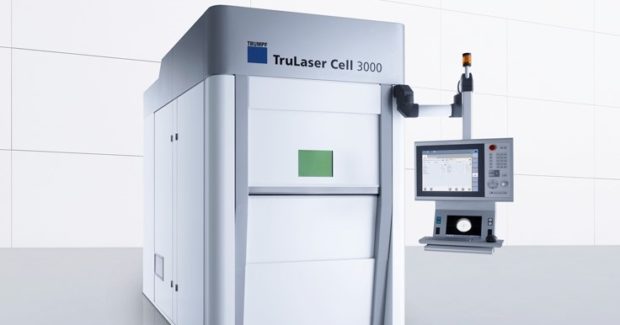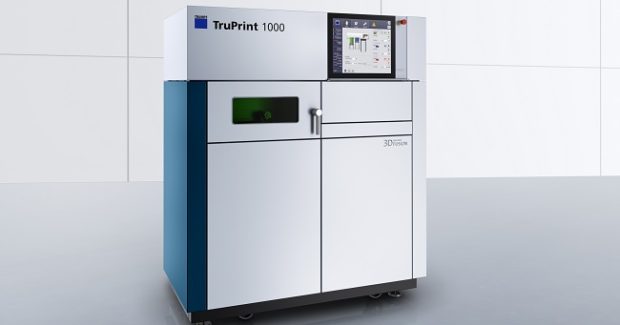Advanced Systems for Medical Device Manufacturing
The TruLaser Cell 3000 5-axis laser machine from TRUMPF quickly and easily switches between fine cutting with up to 8 kW of solid-state laser power, precision welding with a wire feeder, or laser metal deposition for cladding or adding volume and structures to small or medium-sized 2D or 3D components.
Posted: November 1, 2018
For one-off prototypes to high volume production, the versatile and cost-efficient TruLaser Cell 3000 5-axis laser machine from TRUMPF Inc. (Farmington, CT) can quickly and easily switch between fine cutting, precision welding with a wire feeder, or additive manufacturing of small or medium-sized 2D or 3D components used by medical device manufacturers. With solid-state laser options providing up to 8 kW of laser power, this machine can process a wide range of materials, including nonferrous metals. The TruLaser Cell 3000 features laser metal deposition (LMD) technology for either cladding or to add volume and structures to existing parts. LMD uses a laser beam to generate a melt pool on the surface of the component (substrate) before a stream of metal powder is blown into that melt pool and fused to the substrate. Fabricators can apply highly precise layers, both in overlap and size, using this additive manufacturing technology.
Processing metals with the TruLaser Cell 3000 is simple since the focal position is adjusted to the thickness of the sheet metal by the operating software. It is also possible to expand the diameter of the focus. This enables fabricators to cut materials of different thicknesses or to switch between welding and cutting applications without changing the focusing optics. Its modular design with integrated electrical control, cooling units and laser optics enables fabricators to easily add this laser system to any production environment.
https://youtu.be/6Nv-Nsvunvo
TRUMPF also offers their compact TruPrint 1000 3D printer with laser metal fusion (LMF) technology that uses a laser and metallic powder to build any desired component, based on data supplied directly by a CAD program. LMF systems create the component, layer by layer, from metal powders with grain sizes as small as 20 microns. This technology is ideal for parts that are complex in their geometry, such as those with internal channels and hollow spaces, and for manufacturing individual parts or short production runs economically. The compact model is a perfect fit for job shops, medical or dental customers, or for R&D environments. It can generate parts that are a maximum of 100 mm diameter and 100 mm tall. The user interface with touch screen control steps the operator intuitively through the individual phases of the process. All of the components, including the laser, optics, process enclosure, filter unit and control cabinet, are integrated into the compact housing of the TruPrint 1000.
The supply cylinder, construction chamber and the overflow receiver are all aligned inside the enclosure. The supply cylinder contains the stainless steel, aluminum or any weldable material in powdered form. During the build, a layer of metal powder is applied to a substrate plate and then a 200 W laser is used to fuse the cross section of the geometry to the plate. After the exposure, the plate is lowered and the next layer of powder is applied. This procedure is repeated until the part is finished. The entire process takes place inside the enclosure, blanketed by protective gas and at an oxygen content of 0.1 percent for maximum part quality.
TRUMPF has also continued to optimize their LMD technology for adding volume and structures/ features to existing parts. In LMD systems, the laser forms a melt pool on the surface of a component and fuses the powder – applied simultaneously and coaxially –to create the desired shape. Applying multiple layers enables the user to expand the form in any direction. With the ability to add material at rates as great as 500 cu cm per hour, this process can be more economical than conventional manufacture. In addition, complex structures can be added to existing parts allowing for the design of communized base structures that have features and strength added where needed. Based on the specifics of the application, fabricators can choose either the large TruLaser Cell 7040 or the more compact TruLaser Cell 3000 with the new LMD package.
TRUMPF Inc., 111 Hyde Road, Farmington Industrial Park, Farmington, CT 06032, 860-255-6039, www.us.trumpf.com.
















